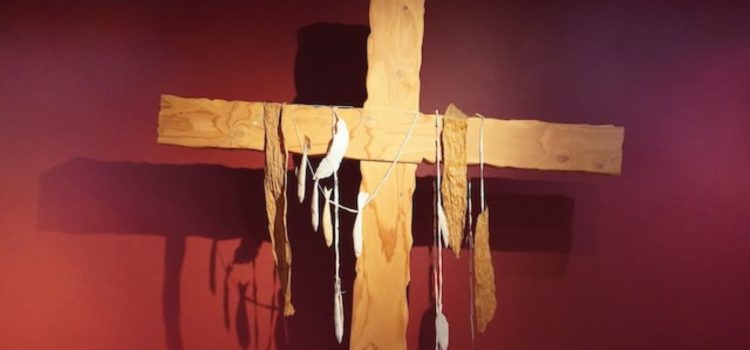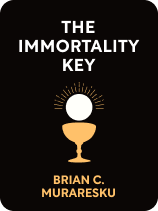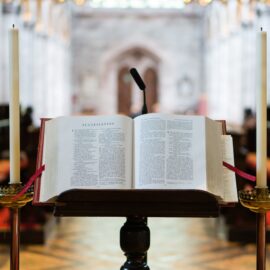

This article is an excerpt from the Shortform book guide to "The Immortality Key" by Brian C. Muraresku. Shortform has the world's best summaries and analyses of books you should be reading.
Like this article? Sign up for a free trial here.
What religion did Christianity originate from? How did Christianity replace paganism?
According to Brian Muraresku, Christianity began as a female-led pagan cult that used psychedelics to induce transcendental states to connect with the divine. Psychedelic brews induced the direct experience of God, but this kind of experience was eventually suppressed by the Christian “establishment.”
Keep reading to learn about the pagan origins of Christianity.
The Gnostic Gospels
According to Brian Muraresku, an important source for understanding the pagan origins of Christianity are the Gnostic Gospels. These are a collection of books purportedly written by followers of Jesus, likely between AD 120 and 150. Although the writers themselves professed to be devotees of Jesus and claimed to be revealing truths from him, leaders of the early Christian church omitted these books from the Biblical canon, and they were lost to history until they were unearthed in Egypt in 1945.
Muraresku says the Gnostic Gospels were originally part of the Christian scriptures but were later eliminated because they encouraged experiencing direct union with God. He explains that the more orthodox leaders of the Church wanted the priests to be the only arbiters of God because people who have their own direct experience of God are harder to convert and control. So, they ultimately sought to keep the populace from these mystical experiences.
Muraresku believes these gospels provide a window into the beliefs and traditions that defined early Christianity, and that they explain why it would have appealed to the ancient Greeks—because, he says, Christianity in its original form was itself a mystical tradition.
Psychoactive Wine
Wine was clearly a component of Dionysian rituals for millennia, and copious ancient art and written sources depict ritual consumption of wine, so it’s established that people were drinking wine ceremonially in Greece at the time of early Christianity. Once Dionysus was incorporated into the Mysteries, Muraresku believes the wine that would have replaced the kukeon also would have been prepared with specific herbs to make it psychedelic.
Like beer, wine in ancient times was different from the wine we know today. It was lower in alcohol content, and yet there are many accounts suggesting it was far more potent, so scholars conclude it must have contained other substances.
The most compelling written evidence Muraresku presents here is a Greek encyclopedia of herbal medicine called De Materia Medica from AD 40-90. This document describes 56 different detailed recipes for wines spiked with botanical ingredients, including those with psychoactive properties. The author describes one mixture, wine mixed with black nightshade, as “producing not unpleasant visions.” This is solid evidence that the Greeks during the time of proto-Christianity were mixing potent psychoactive herbs into their wine.
(Shortform note: Much of the inspiration for Muraresku’s research comes from the work of scholar Carl A.P. Ruck. In his article entitled Entheogens in Ancient Times: Wine and the Rituals of Dionysus, Ruck discusses how early wine fermentation necessitated the addition of botanical ingredients to give it potency. He says the fermentation process without modern methods, combined with the custom of diluting the wine with water, only yielded a beverage with about 1% alcohol content, and yet there are descriptions reporting severe intoxication after only a couple of glasses of such wine. This means, Ruck concludes, they were clearly mixing other potent ingredients into their wine.)
Archaeological Evidence
In terms of the archaeological evidence, Muraresku points first to depictions in ancient art that show priestesses or goddesses mixing mushrooms and other unidentified herbs into wine.
But the most exciting evidence suggesting the presence of psychedelics comes from Pompeii, Italy. Although the city was destroyed by a volcano in AD 79, the volcanic ash preserved everything exactly as it was at the moment the volcano hit—including hard evidence of many herbal preparations mixed with wine.
Muraresku explains that just outside the main gates of the city is a site called “Villa of the Mysteries,” a 40,000 square-foot ritual compound that contains clear evidence that Greco-Roman Dionysian mysteries were being practiced there. In walking distance from this ritual site is a farm that contained many large vessels for storing liquid, indicating that what was being stored in them was being prepared in mass quantities to supply people.
Testing revealed the vessels contained wine mixed with a number of botanical ingredients. Traces identified include opium, cannabis, henbane, and black nightshade—all mind-altering substances. Muraresku believes this provides the strongest evidence that people were using psychedelic beverages as part of their rituals in the proto-Christian era.
| Psychedelic Art Can Provide Insight Yale and Harvard archaeologists Karen Polinger Foster and Andrew Koh have analyzed artwork on pottery and wall murals from ancient sites at Knossos, Greece. They compare this artwork side-by-side (which you can see in a video here) with modern psychedelic artwork and note the similarities in style and themes. They note such themes as kaleidoscopic forms, optical illusions creating a sense of movement, and distorted, vibrant representations of elements of nature. They argue that, paired with the archaeochemical evidence of botanical ingredients mixed with wine at sites like this, the artwork can give us further insight into the psychedelic experience of ancient peoples. |

———End of Preview———
Like what you just read? Read the rest of the world's best book summary and analysis of Brian C. Muraresku's "The Immortality Key" at Shortform.
Here's what you'll find in our full The Immortality Key summary:
- The secret that kept ancient Greeks and early Christians from fearing death
- The origins of Christianity and its overlap with pre-existing pagan customs
- The real reason why women can't be priests






